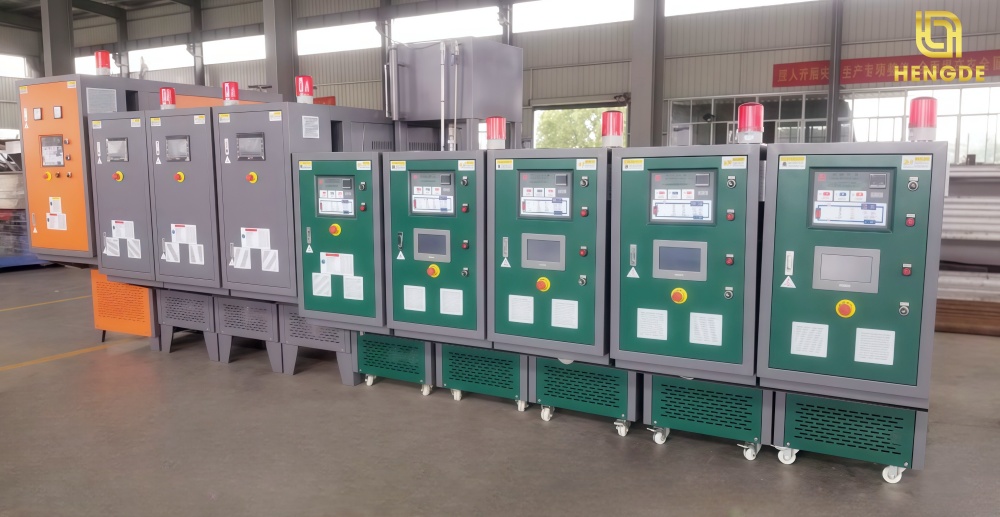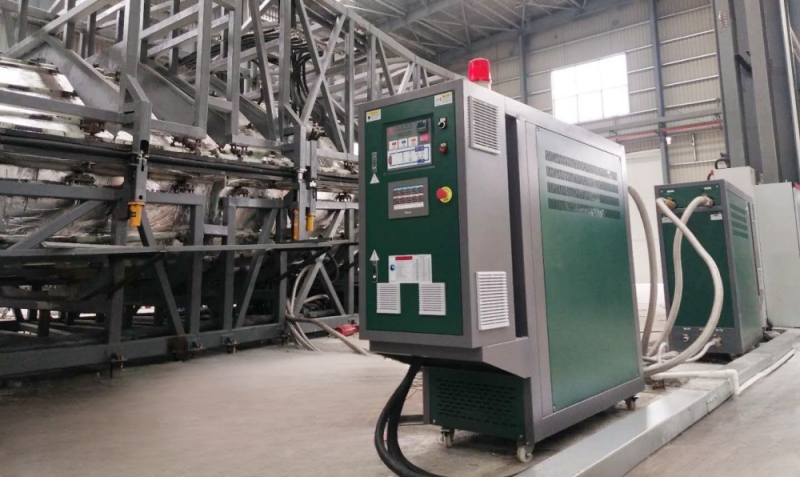
Mold temperature controller, also known as mold temperature machine, was originally used in the temperature control industry of injection molds. Later, with the development of the machinery industry, mold temperature controllers were used more and more widely. Now mold temperature controllers are generally divided into water mold temperature controllers and oil mold temperature controllers. If the selected mold temperature controller matches the temperature requirements of product molding, it can greatly improve the quality of the product and reduce the operating cost of the product. So how to choose a mold temperature controller that matches your process requirements?

1. Heat transfer medium: thermal oil / water.
* Water mold temperature controller: Water-type mold temperature controller uses water as a heat transfer medium and is suitable for occasions where the temperature control requirement does not exceed 200°C. Its advantages are high heat transfer efficiency, environmental friendliness, and relatively low cost.
* Oil mold temperature controller: Oil-type mold temperature controller uses oil as a heat transfer medium and is suitable for high-temperature occasions. The temperature control range can reach 350°C. Oil type mold temperature controllers are suitable for industries with high temperature control requirements, such as the hot pressing mold industry.
2. Cooling method: direct cooling / indirect cooling
* Direct cooling: Direct cooling is suitable for applications that require rapid cooling, such as certain plastic processing processes. This method can quickly reduce the temperature of the heat transfer medium and improve production efficiency.
* Indirect cooling: Indirect cooling uses a cooling circuit separated from the main circuit. It is suitable for applications that require more precise temperature control, such as precision mold processing. With an independent cooling circuit, temperature changes can be controlled more finely.
3. Temperature control range: low temperature application / high temperature application
* Low temperature application: Taking the plastics industry as an example, due to its relatively low temperature requirements, water mold temperature controllers can meet the requirements. The temperature control accuracy of water temperature controllers is roughly ±1℃, which is sufficient to meet the needs of most industrial application scenarios.
* High temperature application: In the case of high temperature applications, such as rubber pressing or metal casting, where high temperature control is required, oil mold temperature controllers are suitable. Oil type mold temperature controllers can not only achieve a wider temperature control range, but also perform better in thermal stability.
4. Mold size and heat capacity
Large molds often require mold temperature controllers to have sufficient heating or cooling power to quickly reach and maintain the required temperature. Molds with large heat capacity require more energy during heating or cooling. For example, a large automotive parts injection mold has a much larger heat capacity than a small plastic toy mold, so a more powerful mold temperature controller needs to be selected. The heat capacity can be estimated by calculating the volume of the mold and the specific heat capacity of the material, thereby determining the appropriate mold temperature controller power.
5. Pump flow and pressure
The flow of the circulation pump determines the circulation speed of the heat transfer medium (such as water or heat transfer oil) between the mold and the mold temperature controller. Insufficient flow will cause uneven mold temperature and affect product quality. Generally speaking, the flow rate is determined according to the size and complexity of the mold. For small molds, a circulation pump flow of 10-30L/min may be sufficient, while a large and complex mold may require a flow of more than 50L/min. The pressure of the mold temperature controller must be able to overcome the resistance of the pipeline and the resistance inside the mold to ensure the smooth circulation of the heat transfer medium. If the pressure is not enough, local overheating or overcooling may occur. When selecting a mold temperature controller, consider the impact of factors such as the mold's pipeline length, pipe diameter, and number of elbows on the pressure. To meet the needs of different molds.
6. Control system
Hengde mold temperature controller adopts imported microcomputer control mode. According to customer requirements, PLC control and RS485 communication function can be selected to achieve automatic management.
7. Safety
Check whether the mold temperature controller has perfect safety functions, such as overheat protection, leakage protection, overload protection, etc. For industrial occasions with dangerous environments such as flammable and explosive gases, steam, dust, etc., such as chemical, oil and gas, pharmaceutical and other industries, when purchasing a mold temperature controller, you also need to consider the explosion-proof function and choose Hengde's explosion-proof mold temperature controller.
8. Purchase cost / operating cost
Compare the prices of mold temperature controllers of different brands and functions. Under the premise of meeting the application requirements, choose the most cost-effective mold temperature controllers. At the same time, the operating cost of the mold temperature controller, including energy consumption, maintenance costs, etc., should also be considered.
For more questions about the purchase of mold temperature controllers, please visit Hengde's website (www.hengdechiller.com). Choose Hengde, Choose Perfect Mold Temperature Controllers!
